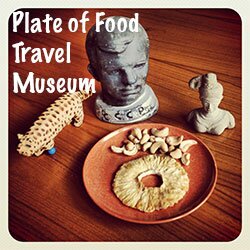The Trans-Siberian Railway is a Tsar’s creation, but the scrappy BAM — connecting west Siberia with the Soviet Harbor port in the far east — is pure Soviet. Built over most of the USSR’s run, with stops in production here and there, the Soviets put cosmonaut-like money into this train to nowhere. Purpose-built towns were made along the way, with laborers chiefly from Gulags that moved up and down the line built over permafrost and through mountains and over rivers no one had developed before.
Most towns here are cynical gray ugly creatures — a lone Chinese restaurant, a sad cafe with latticework of iron gates on the windows, blocks of uniform housing with apartments in the beautiful area as cramped as Hong Kong’s Chungking mansions. That’s not true of Komsomolsk. Here, buildings are pink, salmon and sky-blue, made to look like St Petersburg by design — the city, founded in 1932, became a ship-building and aircraft-building center of the Far East, and a successful one. Even today it feels more Soviet than many towns, in the best possible ways. Parks named for Ship-Building Factory, Railroad Workers and Construction Workers dot the city, as do tree-lined backways and sidewalks. The old ‘factory kitchen’ (fabrika-kuzhnya), where streams of workers poured in for meals next to the still-active shipyards, is now El Dorado, a renovated nightclub.
A local tour agent took me on a trip of various sights of the ‘Stalin era.’ His grandfather perished in a nearby gulag, then his father moved here from Siberia to see if he could find the cemetery. He’s happy to be here. ‘Things maybe were better 10 or 15 years, when the government gave us high pay, good food and free tickets as incentive to live here. Now they want to out. But I like it,’ Misha, 48, says.
We visited an area by the railroad that was now as a mini gulag district — nice tree-lined streets and Petersburg-styled housing blocks. A district for the administration, not the prisoners.
We drove by the active Amur Steel plant — ‘used to be 30,000 workers, now 7,000′ — and passed a working prison. ‘When I was young I took the tram to work in the factory an we’d stop here, as 1000 gulag prisoners would cross the tracks to work in a nearby plant. That stopped in 1980.’ And the prisoners now? ‘Mostly criminals. But maybe a little bit political too.’










